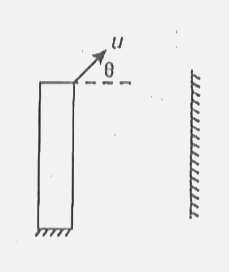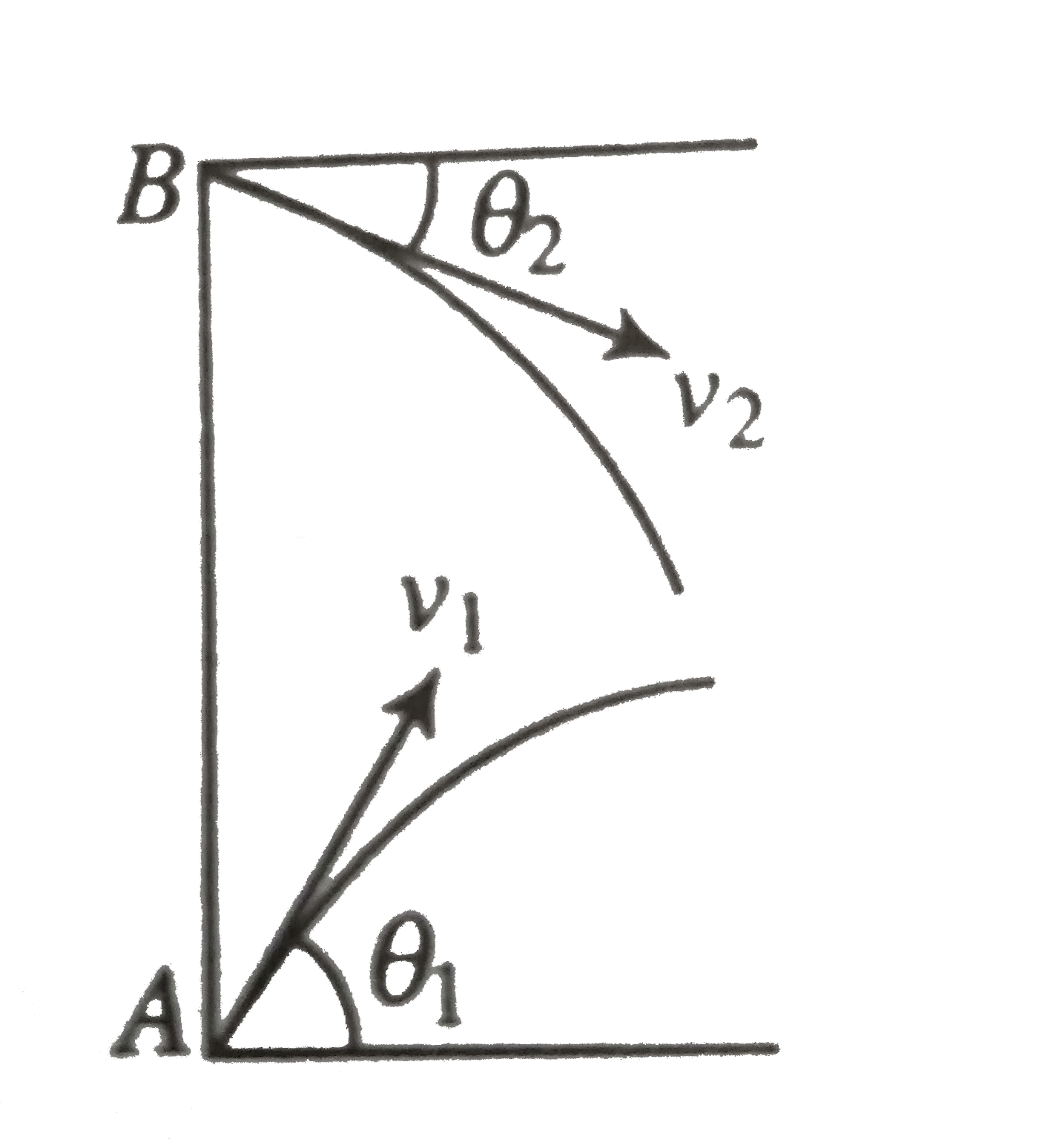A ball is projected from top of the table with initial speed u at an angle of inclination , motion of image w.r.t. object before collision (motion is in vertical plane) Mirror (A) must be projectile (B) must be straight line and vertical (С) must be straight line and horizontal (D) may be straight line, depends upon value of 0.
Step by step video & image solution for A ball is projected from top of the table with initial speed u at an angle of inclination , motion of image w.r.t. object before collision (motion is in vertical plane) Mirror (A) must be projectile (B) must be straight line and vertical (С) must be straight line and horizontal (D) may be straight line, depends upon value of 0. by Physics experts to help you in doubts & scoring excellent marks in Class 11 exams.
Similar Questions
A ball is projected from top of the table with initial speed u at an angle of inclination θ, motion of image of ball w.r.t ball
 View Solution
View SolutionA particle is projected at time t=0 from a point O with a speed u at an angle θ to horizontal. Find the torque of a gravitational force on projectile about the origin at time t.(x,y plane is vertical plane)
View Solution
Knowledge Check
- Question 1 - Select One
A ball A is projected with speed 20m/s at an angle of 30∘ with the horizontal from the ground. Another ball B is released simultaneously from a point on the vertical line along the maximum height of the projectile. Both the balls collide at the maximum height of the first ball. The initial height of ball B is
A5mB10mC15mD20m - Question 2 - Select One
A particle is projected from the top of a tower of height h with a speed u at an angle θ above the horizontal .
T1=Time taken by the projectile to reach the height of tower again .
T2=Time taken by the projectile to move at right angle to initial direction of motion .
V1=Speed of the projectile when it moves at an angle θ/2 with the horizontal .
V2=Speed with projectile strikes the ground .
. APQRS4123BPQRS1234CPQRS2413DPQRS2134
APQRS4123BPQRS1234CPQRS2413DPQRS2134 - Question 3 - Select One
A ball is projected from the ground at a speed of 10ms−1 making an angle of 30∘ with the horizontal. Another ball is simultaneously released from a point on the vertical line along the maximum height of the projectile. The initial height of the second ball is
(Take g=10ms−2)A6.25 mB2.5 mC3.75 mD5 m
There are two vertical walls separated by a distance 3m. A projectile is projected from the foot of one wall with a speed 10√2ms at angle 45∘ with horizontal as shown in the figure. During its motion, it collides many a times with vertical walls elastically. During collision, the velocity of the 'projectile perpendicular to wall get reversed and the one which is parallel to wall remains unchanged. The number of collision projectile will make with the vertical walls before hitting the ground is
'(##CEN_KSR_PHY_JEE_C08_E01_021_Q14##)'View SolutionA heavy particles is projected from a point at the foot of a fixed plane, inclined at an angle 45∘ to the horizontal, in the vertical plane containging the line of greatest slope through the point. If ϕ(>45∘) is the inclination to the horizontal of the initial direction of projection,for what value of tanϕ will the particle strike the plane horizontal.
View SolutionA particle of mass m is projected with a speed u at an angle θ to the horizontal at time t=0. Find its angular momentum about the point of projection O at time t, vectorially. Assume the horizontal and vertical lines through O as X and Y axes, respectively.
View SolutionState which of the following statements are true (T) and which false (F): Point has a size because we can see it as a thick dot on paper. By lines in geometry, we mean only straight lines. Two lines in a place always intersect in a point. Any plane through a vertical line is vertical. Any plane through a horizontal line is horizontal. There cannot be a horizontal line is a vertical plane. All lines in a horizontal plane are horizontal. Two lines in a plane always intersect in a point. If two lines intersect at a point P , then P is called the point of concurrence of the two lines. If two lines intersect at a point p , then p is called the point of intersection of the two lines. If A, B, C and D are collinear points D, P and Q are collinear, then points A, B, C, D, P and Q and always collinear. Two different lines can be drawn passing through two given points. Through a given point only one line can be drawn. Four points are collinear if any three of them lie on the same line. The maximum number of points of intersection of three lines in three. The minimum matching of the statements of column A and Column B .
View SolutionTwo balls are projected from points A and B in vertical plane as shown in figure. AB is a straight vertical line. The balls can collide in mid air if v1/v2 is equal to
 View Solution
View Solution
